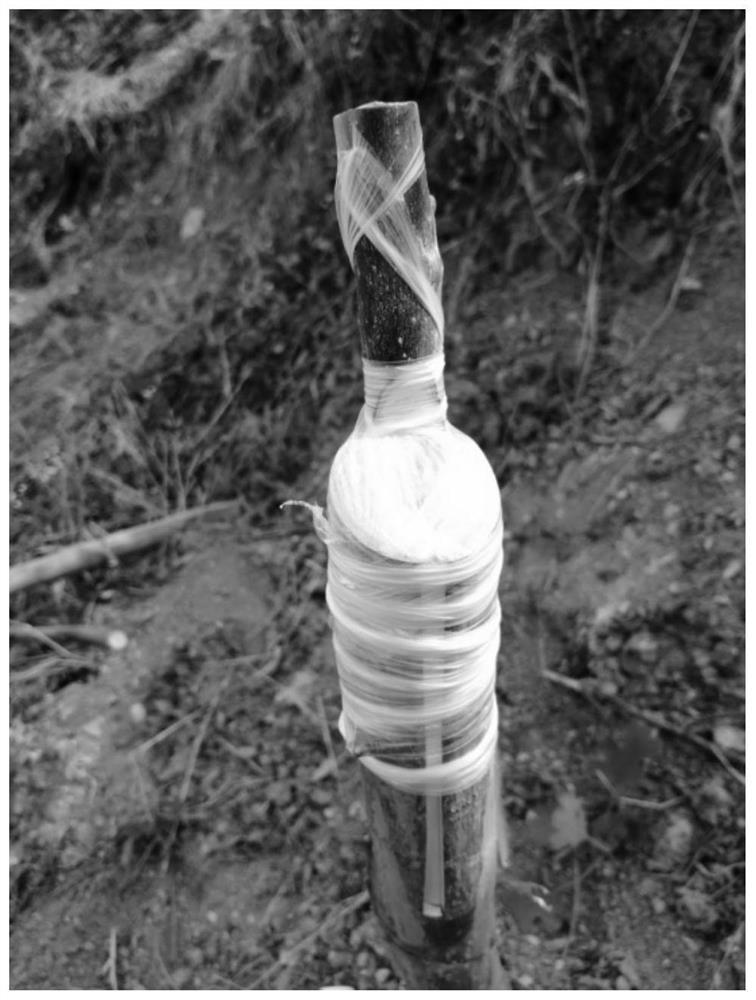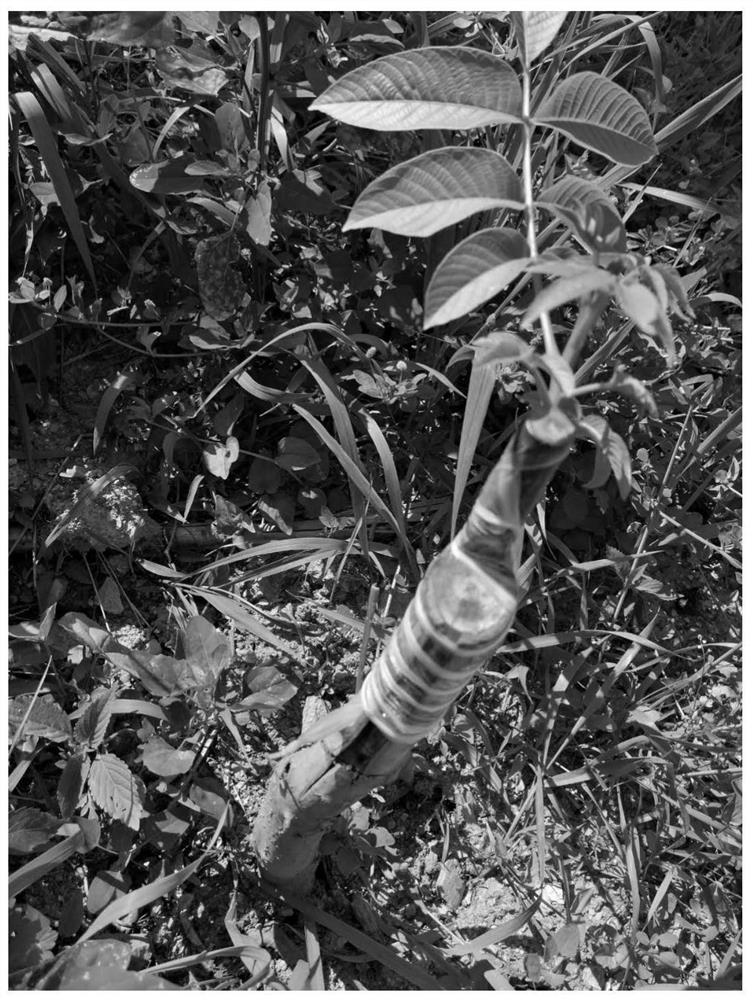Horseshoe-shaped rootstock treatment hard branch grafting method for preventing bleeding of walnut trees
A hard branch grafting, horseshoe-shaped technology, applied in the field of walnut planting, can solve the problems of mixed good and bad, mixed varieties, poor quality and quality, etc., and achieve the effect of heavy root pressure and serious injury
- Summary
- Abstract
- Description
- Claims
- Application Information
AI Technical Summary
Problems solved by technology
Method used
Image
Examples
Embodiment 1
[0035] Present embodiment provides a kind of horseshoe-shaped rootstock of anti-walnut tree injury flow and handles hard branch grafting method, comprises the following steps:
[0036] 1. Preparation before grafting
[0037] 1.1 Scion collection
[0038] 1.1.1 Collection time: It can be collected from 20 to 30 days after walnut leaves fall to 20 to 30 days before germination in spring. It is advisable to collect around New Year's Day in areas where the winter is cold or the branches are easy to shoot out in early spring. If there are no conditions such as storage in cold storage, it is advisable to collect in early and mid-February.
[0039] 1.1.2 Scion selection: Hard branch scion refers to the collected tree crowns with a thickness of 1-2 cm or more in the upper part, small pith, well-developed branches, full buds, and healthy annual branches without pests and diseases.
[0040] 1.1.3 Scion storage: After the scion is collected, remove thick branches and pure male flower ...
Embodiment 2
[0064] Compared with embodiment 1, the difference of this embodiment is limited to:
[0065] 3. Grafting method
[0066] Horseshoe-shaped rootstock for grafting: Young trees with a joint diameter of less than 5 cm can be grafted with a single head. Select the straight and smooth part of the grafted branch, cut off the upper end of the rootstock at an angle of 15 degrees to form a horseshoe shape, use a grafting knife to cut the top end of the cross section into a crescent-shaped incision, and cut off the thick old bark of the rootstock under the incision to expose Tender skin (about 2 to 3 mm thick tender skin left). The length of the peeled bark is slightly longer than the length of the long tongue-shaped section of the scion. Use a grafting knife to vertically incise 0.4 cm of the skin at the lower end of the cross-section, and tear off the cut skin 16 cm downwards as a launder. Choose a woody scion, cut it into 20 cm long branches, leave 1 to 2 full buds at the upper end...
Embodiment 3
[0068] Compared with embodiment 1, the difference of this embodiment is limited to:
[0069] 3. Grafting method
[0070] Horseshoe-shaped rootstock for grafting: young trees with a joint diameter of 3 cm can be grafted with a single head. Select the straight and smooth part of the grafted tree branch, cut off the upper end of the rootstock at an angle of 12 degrees to form a horseshoe shape, use a grafting knife to cut a 5 cm crescent-shaped incision at the top end of the cross-section, and cut off the thick old tree of the rootstock under the incision The tender skin is exposed on the skin (about 2-3mm thick tender skin left). The length of the peeled bark is slightly longer than the length of the long tongue-shaped section of the scion. Use a grafting knife to cut vertically about 0.3 cm of the skin at the lower end of the cross-section, and tear off the cut skin about 15 cm downwards as a launder. Choose a woody scion, cut it into 18 cm long branches, leave 1 to 2 full b...
PUM
 Login to View More
Login to View More Abstract
Description
Claims
Application Information
 Login to View More
Login to View More - R&D
- Intellectual Property
- Life Sciences
- Materials
- Tech Scout
- Unparalleled Data Quality
- Higher Quality Content
- 60% Fewer Hallucinations
Browse by: Latest US Patents, China's latest patents, Technical Efficacy Thesaurus, Application Domain, Technology Topic, Popular Technical Reports.
© 2025 PatSnap. All rights reserved.Legal|Privacy policy|Modern Slavery Act Transparency Statement|Sitemap|About US| Contact US: help@patsnap.com



